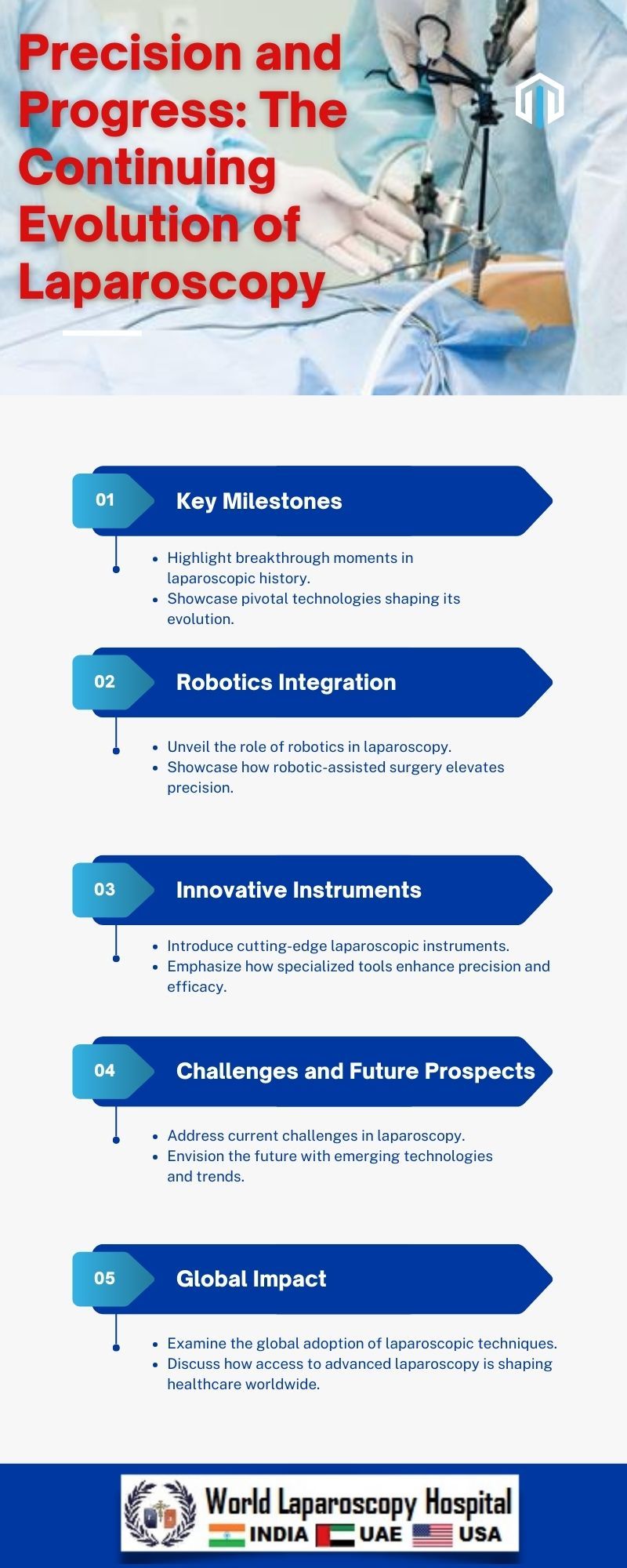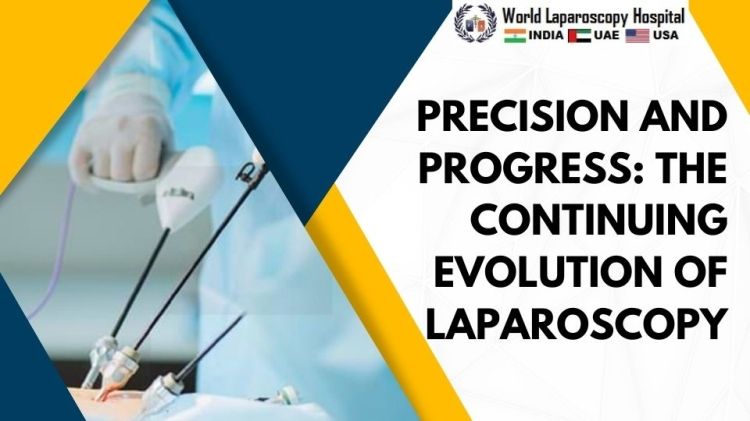Introduction:
Laparoscopy, a groundbreaking surgical technique introduced in the early 20th century, has evolved significantly over the years. Initially employed for diagnostic purposes, it has become a mainstream approach for a wide range of surgeries, owing to its minimally invasive nature. The relentless pursuit of precision and progress has driven continuous advancements in instrumentation, imaging, and robotics, transforming laparoscopy into a sophisticated and highly effective surgical tool.

Historical Perspective:
The origins of laparoscopy trace back to the early 1900s when the first attempts were made to visualize the abdominal cavity using primitive instruments. The technique gained momentum in the mid-20th century with the development of fiber optics, allowing for improved visualization and illumination. As the decades passed, laparoscopy transitioned from a diagnostic tool to a therapeutic one, revolutionizing the field of surgery.
Advancements in Instrumentation:
One of the key contributors to the evolution of laparoscopy is the continuous refinement of surgical instruments. The early instruments were rigid and limited in their range of motion, posing challenges to surgeons. However, modern laparoscopic instruments incorporate articulation and improved maneuverability, enabling surgeons to perform complex procedures with greater precision.
The introduction of robotic-assisted laparoscopy marked a significant milestone. Robotic systems, such as the da Vinci Surgical System, provide surgeons with enhanced dexterity and three-dimensional visualization, facilitating intricate surgeries that were once deemed too challenging for conventional laparoscopy. The marriage of robotics and laparoscopy exemplifies the synergy between precision and technological progress.
Imaging Advancements:
Laparoscopy heavily relies on imaging for navigation and visualization during surgery. Early laparoscopes offered limited image quality, hindering the surgeon's ability to discern fine details. However, with the advent of high-definition cameras and improved imaging systems, the visual acuity of laparoscopic procedures has reached unprecedented levels.
Furthermore, innovations like fluorescence imaging have been integrated into laparoscopic procedures. This allows surgeons to visualize blood flow, identify specific tissues, and enhance the overall precision of the surgery. Real-time imaging technologies contribute significantly to reducing the risk of complications and ensuring optimal outcomes.
Robotic Integration:
The integration of robotics into laparoscopy has been a transformative leap in surgical capabilities. Robotic-assisted systems offer several advantages, including tremor reduction, increased range of motion, and the ability to perform delicate tasks with unparalleled precision. Surgeons, operating from a console, manipulate robotic arms with precision, translating their hand movements into precise actions within the patient's body.
The da Vinci Surgical System, a pioneer in robotic-assisted laparoscopy, has been widely adopted across various surgical specialties. Procedures such as prostatectomy, hysterectomy, and colorectal surgery have seen enhanced outcomes and reduced recovery times due to the precision and minimally invasive nature of robotic-assisted laparoscopy.
Challenges and Future Directions:
Despite the remarkable progress, challenges persist in the field of laparoscopy. Accessing and visualizing certain anatomical regions can be challenging, and the learning curve for mastering robotic systems remains a consideration. Moreover, cost implications associated with robotic-assisted surgeries raise questions about accessibility.
Looking ahead, ongoing research focuses on addressing these challenges and further advancing laparoscopic techniques. Artificial intelligence (AI) is emerging as a potential ally, with machine learning algorithms assisting surgeons in image interpretation and decision-making during surgery. Continued collaboration between engineers, surgeons, and data scientists is essential to unlock the full potential of laparoscopic surgery.
Conclusion:
The evolution of laparoscopy embodies a relentless pursuit of precision and progress in the field of surgery. From its humble beginnings as a diagnostic tool to the integration of robotic-assisted systems, laparoscopy has transformed the landscape of modern surgery. Advancements in instrumentation, imaging, and robotics continue to push the boundaries of what is possible, promising a future where surgical procedures are not only minimally invasive but also characterized by unprecedented precision and efficacy. As the journey of laparoscopy unfolds, the delicate balance between tradition and innovation remains the guiding force in shaping the future of surgical practice.


